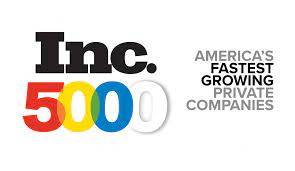 Partner Guest Post by iD Commerce & Logistics
Partner Guest Post by iD Commerce & Logistics
Planning Ahead: Managing Fulfillment to Facilitate Web Store Growth
Whether you’re developing a straightforward eCommerce site with a few products or an online storefront designed to handle thousands of transactions per day, one of the key factors to keep in mind is fulfillment.
When an online purchase takes place, what happens? How are the products tracked, picked, packed, shipped, and restocked?
What seems like a complex process can actually be quite simple with the proper planning and partnerships tailored to the size of your business and current eCommerce platform.
Let’s take a look…
1) Manual – Startup eCommerce businesses often begin with a manual order fulfillment process. Especially when dealing with artisan or made-to-order products, it makes most sense to print labels/invoices, package boxes, track inventory, and control shipments by hand. Depending on your situation and growth trajectory, this can run smoothly for the first few months to a year of operation.
As your business grows, the popular eCommerce platforms offer apps/plugins like Stitch Labs, Bizelo, and TradeGecko to streamline inventory management and reduce some of the tedious tasks. While this software does come with an added cost, it tends to be well worth the investment.
2) Internal – Once eCommerce transactions reach a tipping point (in the hundreds of orders per week), it’s time to implement a robust inventory and/or warehouse management system like Magaya or SAP and consider building out an internal fulfillment operation.
At this stage in the game, it’s important to weigh the costs and benefits of internal control, brand management, and proximity vs. hiring warehouse staff and paying for space, insurance, utilities, etc. As you’ll see in the section below, it may be more efficient to partner with an existing provider instead of managing an internal warehouse.
With regard to selecting a warehouse management system (WMS), compatibility should be examined before making a purchase. Double check to make sure the WMS you select will integrate with your eCommerce platform through existing tools or minimal development. This shouldn’t be a challenge for any of the major platforms (Magento, Shopify, WooCommerce, Volusion, etc).
3) Outsourced – As an alternative to the above, many eCommerce entrepreneurs choose to work with a third-party fulfillment (3PL) expert to reduce the headache of backend logistics, focus on growing their business, and aggregate buying power with freight carriers.
Outsourced fulfillment can take the form of a transactional, impersonal service like Fulfillment By Amazon (FBA) or a 3PL partner who specializes in supply chain management within certain industries.
As with options #1 and #2, planning the integration well in advance is the major key to success. A variety of software already exists to facilitate WMS integration, though some development work may be required if a 3PL partner has their own proprietary WMS in place.
No matter what size eCommerce business you operate (even if you’re just getting started), fulfillment should not be a secondary decision. With just a little research and planning, ensuring seamless integration between your fulfillment software and online storefront should be a breeze. After all, the fast, accurate, and well-presented orders translate into happy customers and repeat sales.

 Partner Guest Post by
Partner Guest Post by 








